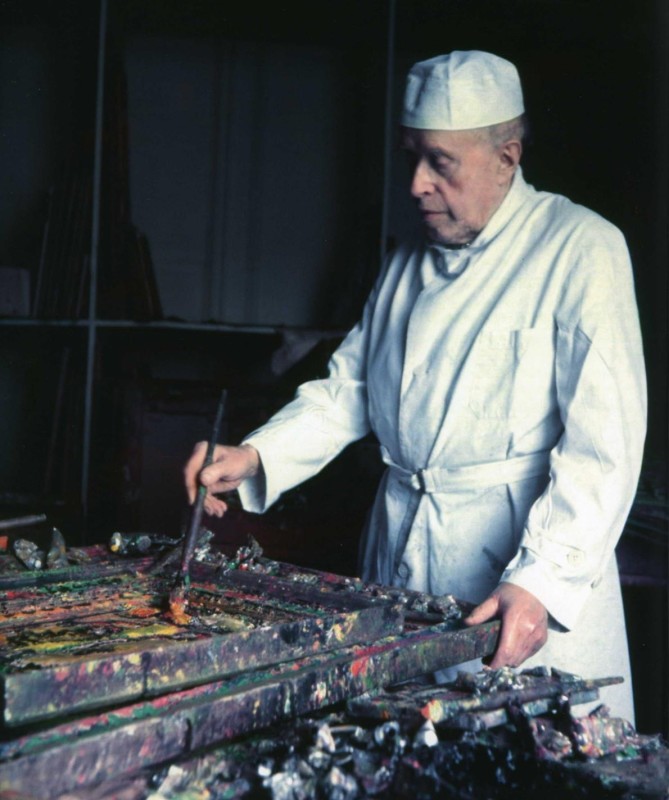This small London showing of Rouault, the first since his 1993 exhibition at the Royal Academy - which intriguingly ended with a picture of 1920 - is dedicated to the memory of Isabelle Rouault, a wonderful lady. And a very special friend who devoted her life to her father’s work.
I first visited Isabelle, over forty years ago, in the flat overlooking the Gare de Lyon, where her father lived, happily, during the last ten years of his life. I had recently joined Sotheby’s and knew, or more to the point, understood nothing about Rouault’s work.
Exuberant youth and naïveté caused me to think his work portrayed a morbid hopelessness. ‘Was your father a manic depressive’ I tactfully asked Isabelle. ‘Oh no’ she replied more than a little amused, ‘Papa loved to joke’. She might have added ‘and play pranks’ as I subsequently learnt from one of his grandsons.
I made many visits to that unique, for me, moving place of pilgrimage. On each occasion I felt I was entering into another world. The subdued natural light and complete peace. The richly burnished old refectory table occupying much of the main room. The famous life-size ‘Dancer’ torn, crumpled and thrown into a bin by German troops - but miraculously preserved. The simple, solid, antique furniture. And the oak lectern carved appropriately in the form of a soaring eagle, bearing, bound in vellum, his magnificent ‘Miserere’, for me the greatest illustrated publication by any artist of the twentieth century. Rouault’s powerful, mystical presence was everywhere.
His studio had been left as it was when he died. Street sounds, barely audible, came through the shuttered windows. A magical, sacred space vibrating with his spirit. One had only to recall photographs of him, in his white artisan's coat and hat, immersed in his painting, to imagine him there. And feel his chosen solitude, compassion, and quiet joy.

I would talk with Isabelle about her father, seated at the same window where he had sat, as in this photograph with Madame Rouault, just a few years before my first visit. And from where he could calmly observe the constant movement below of his beloved Paris.
On an easel placed next to Isabelle, and happily facing me, gazed the radiant, halloed saint head of ‘Sarah’, silently participating in our conversation.
Gradually, I grew to understand and love Rouault’s work. With Isabelle, I arranged two London exhibitions. The first in 1972, in the beautiful gallery of the great Chinese art dealer-connoisseur Giuseppe Eskenazi. Rouault’s rich, singing greens, yellows, oranges and whites resonated in perfect harmony with the exquisite colours and shapes of the early Sung and Tang ceramics. An almost spoken affinity existed between his mysterious, otherworldly faces and the serene Buddha heads. Centuries apart, their spiritual aesthetic and energy seemed to emanate from the same universal force. And express a single, eternal truth.
In the facsimile publication of Rouault’s painted heads which Isabelle gave me as a wedding gift, she inscribed his words:
If nothing under the sun is new, everything can be transformed and we can sing in another way and a different mode to the ancients.
I would like to thank M. Jean-Yves Rouault, M. Gilles Rouault, Madame Anne-Marie Agulhon and M. Philippe Rouault. Without them, this show would not have happened. It is our hope that it will increase the awareness of a great master. And lead to a long-overdue, major retrospective exhibition of his work in this country.

